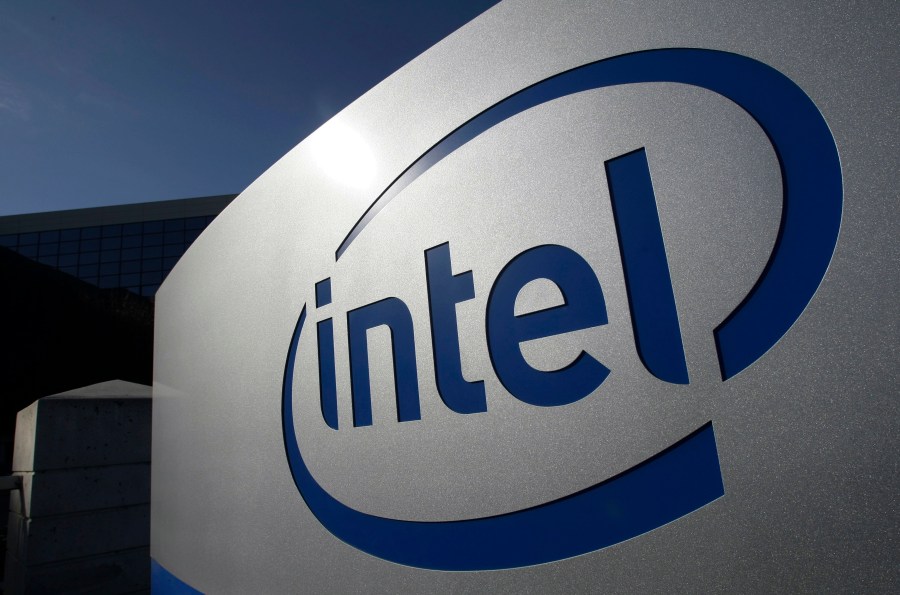[ad_1]

NEW ALBANY, Ohio (WCMH) — Intel is further slowing its construction in Ohio, the company announced Thursday during its Q2 financial reports.
Intel’s Q2 results were slightly better than anticipated but came with more restructuring announcements as it tries to fix its financial problems. In part, this came with a pivot away from projects like Intel’s $28 billion “Ohio One project” and more clarity about its mass layoffs. The results indicated a possible move away from Intel Foundry, the division responsible for the plant under construction in New Albany, if the company is unable to get new customers soon.
“While we are slowing down Ohio, we’re not stopping Ohio,” Intel CFO David Zinsner said.
In statements, both Ohio Gov. Mike DeWine and the city of New Albany reiterated their support of the Intel project.
“The City of New Albany remains encouraged by the company’s continued investment in our region,” the New Albany statement reads, in part.
“While the pace of construction in Ohio may not be as fast, Intel has affirmed its commitment to Ohio as the new leadership of the company makes adjustments to its long-term strategy,” DeWine said in his statement.
What is Intel Foundry?
Intel is split into two main divisions: Intel Products and Intel Foundry. Products is profitable and is in charge of the physical technology Intel develops and sells. Foundry is the manufacturing side of Intel, and it makes complex technology both internally, for Intel Products, and externally, for other tech companies that outsource their manufacturing.
Foundry has not been profitable over the past few years, and the company credited Foundry with much of its own devaluation on Thursday. CEO Lip-Bu Tan said Intel is going to be “disciplined” in its Foundry investments by only allocating funding to Foundry projects that demonstrate a clear demand from clients.
Owning both Foundry and Products has been one of Intel’s prevailing issues. The company is struggling to attract external customers, and Tan said this is because Intel needs to earn trust. The companies Intel Foundry needs to attract for its Foundry business are direct competitors with Intel Products, making it harder to earn that crucial trust.
What did Intel say about Ohio?
Intel said it “will further slow the pace of construction in Ohio to ensure spending is aligned with market demand.” Intel also canceled similar semiconductor manufacturing projects planned or underway in Europe. The company did not announce an updated timeline, and confirmed construction will continue in Ohio.
Ohio’s project was announced in 2022, but Tan assumed the role of CEO only four months ago. Tan said he thought Foundry investments made over the past few years, like Ohio One, were “unwise” because they were made before there was clear market demand for them. In a statement, an Intel spokesperson said the company is still committed to Ohio’s plant but is adjusting construction to make the Foundry business more financially sustainable.
Tan said that fortunately, the construction that has already happened in Licking County allows Intel to be flexible. If there is a higher demand for manufacturing in the future, Tan said the company will be able to accelerate construction in Ohio again.
Much of Ohio’s future will depend on the success of Intel technology that has not debuted yet. In its report, Intel said it needs external customers for the Foundry, specifically its 14A technology. If the company cannot find outside customers for 14A, it said it will have to make major changes, and likely have to discontinue Ohio’s project entirely. Intel recognized that stopping all work in Ohio would be very costly for the company.
What is 14A?
Intel Foundry makes its money by attracting customers for manufacturing. Semiconductor chips are tiny and very difficult to make, so Foundry and other competing manufacturers patent the methods they use to create chips. These methods are like recipes for manufacturing, and are called process nodes.
Intel Foundry’s newest process node is called 14A, which will be made available in 2027. Intel said it will need to attract external customers for 14A if it wants to maintain the Foundry. Unfortunately, Intel said it has not been successful in getting any significant external customers to date. Without 14A customers, Intel said it will likely dissolve the Ohio project.
14A will not be profitable for a few years, but Tan said he is still optimistic and committed to the Foundry. He said he hopes to learn from its current process nodes and use the two-year window before 14A debuts to ensure its success. However, Intel’s Q2 records show the Foundry’s external customer revenue is currently incredibly low, almost half of what it was this time last year.
What about layoffs?
As part of the effort to become more profitable, Intel said it laid off about 15% of its workforce. On Wednesday, Tan said most of the layoffs have already happened.
By the end of the year, the company plans to have just 75,000 employees worldwide. Intel began 2025 with roughly 100,000 employees, 163 of whom worked for the Ohio project. No mass Intel layoffs have been documented in Ohio, although the company has not addressed NBC4’s repeated questions on the subject.
[ad_2]
Source link







